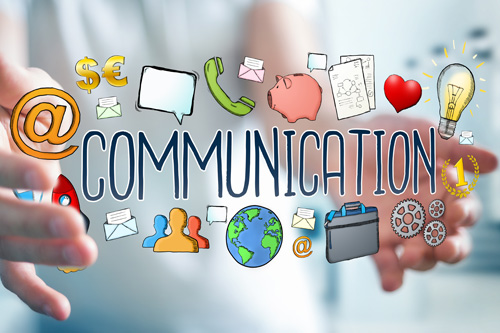
The communication process is a very simple timeline of how we as humans interact. The business communication process is not a walk in the park but it could lead to great improvements in your business. Great communication skills have many benefits that not only include better communication, it allows you to notice the small things about people; such as tone of voice and non-verbal cues that tell someone’s true intentions. Understanding the communication process will allow you to then learn skills about how to notice different things in communication.
Sender: In communication terms the sender is the person that starts the communication process by talking or typing to the receiver. This person will continue the process following the response of the receiver.
Encoding: It is the process of turning thoughts into communication with another person or people. This part of the process can come in the form of typing, talking, writing, and more. Once the sender has finished encoding the message is produced.
Message: The message is the set of symbols or words that the sender transmits to the receiver, through what the communication process calls channels, or sometimes known as media. A message can be anything from an advertisement to a sentence you say in a conversation.
Noise: One of the most important pieces of the communication process in general is noise. Noise is unplanned distortion that can affect how a message is decoded and received. Noise could be physical, psychological, and more. An example of noise could be a TV in the background of a conversation and the receiver hears the TV and doesn’t receiver the message. Being distracted by a thought in your mind while in a conversation is an example of psychological noise.
Decoding: The receiver will assign meaning to the message of the sender, this is where most noise interferences happen. It is the process of interoperating the massage that the sender has sent to give the message purpose.
Receiving: The receiver is the person that the message was sent to. For example if you saw an advertisement you would be the receiver.
Feedback: Feedback is exactly what it sounds like, it is the feedback or response to the sender from the receiver. This way if something was misinterpreted it can be corrected so that both parties are on the same page. This can also be shown in facial expressions or how the receiver acts or physically reacts to that of the sender’s message.
The communication process in itself is a very complex cycle of communication, and when you throw business into communication you can get some very different results. A large amount of businesses try and fail at perfecting to understand the communication process and how it could be applied in the work place. Most employees and even some business owners don’t understand that the key to business is communication. A lot of their problems could be solved by teaching and applying simple communication process components as well as knowing what different feedback or messages could be hurting their communication.
